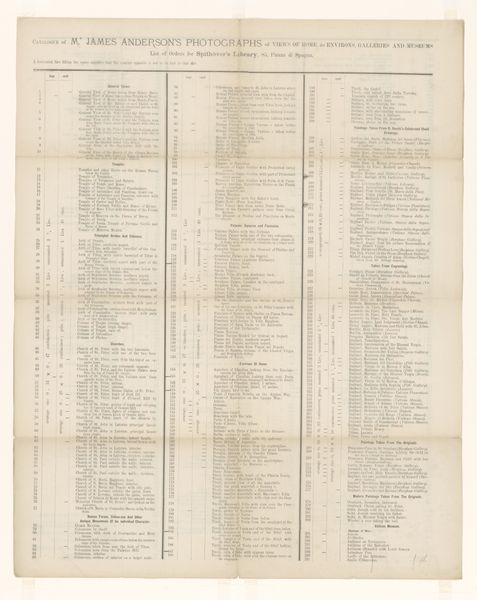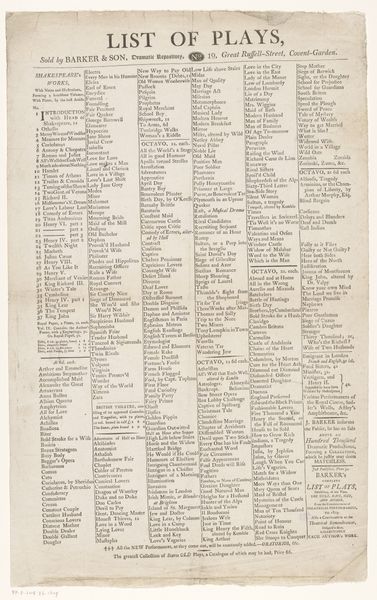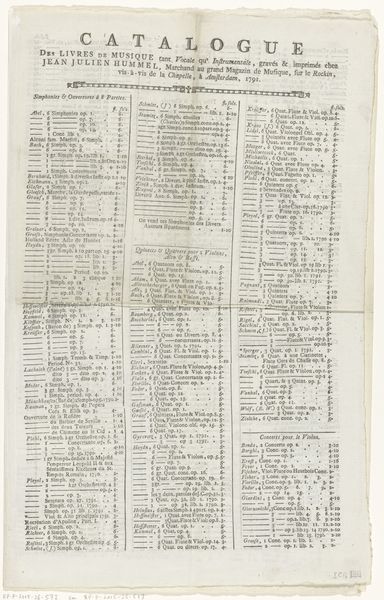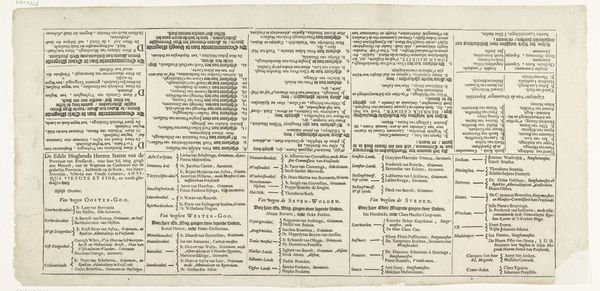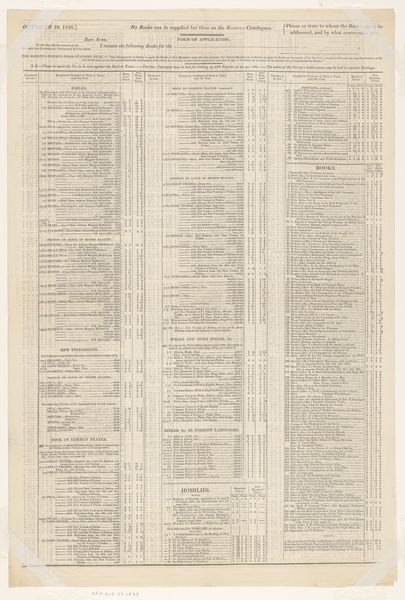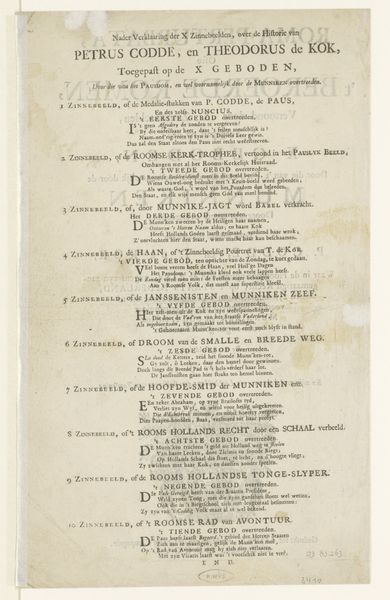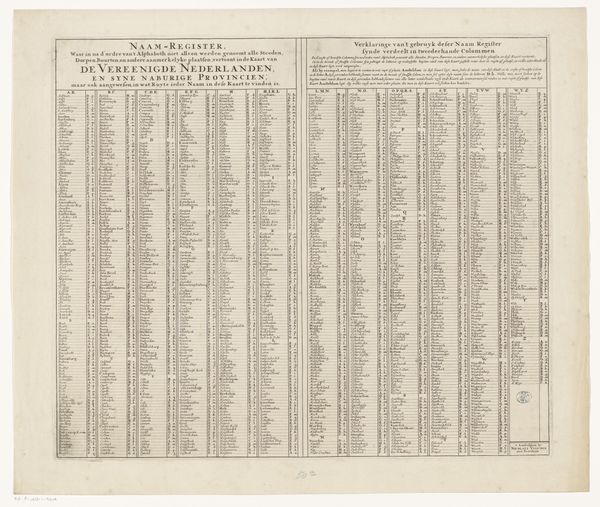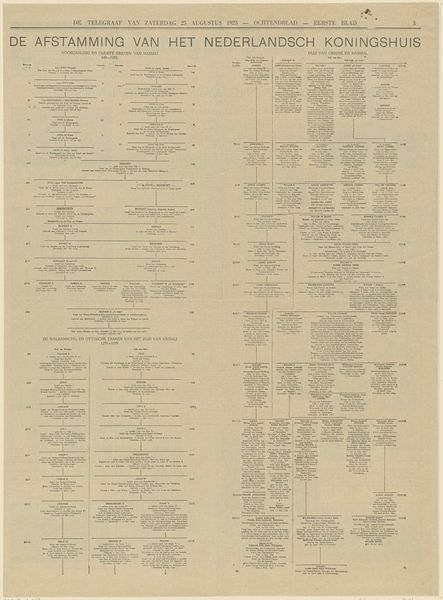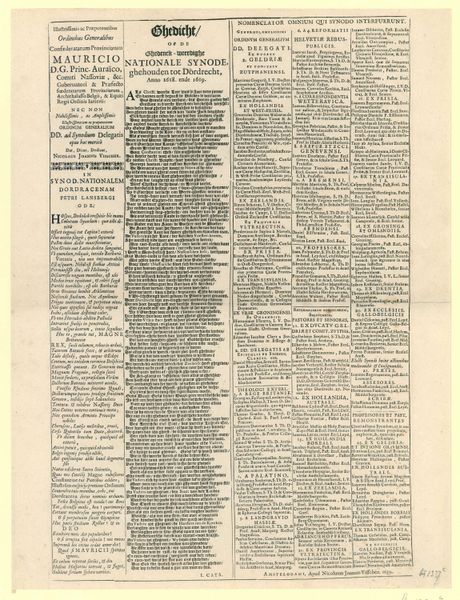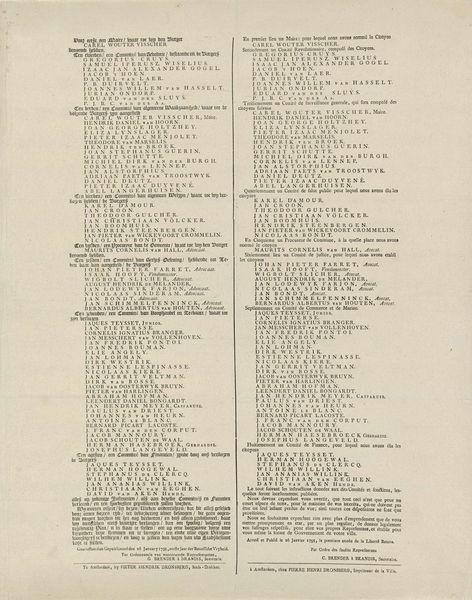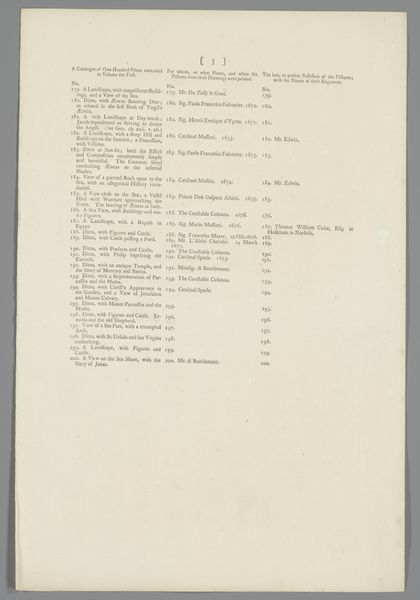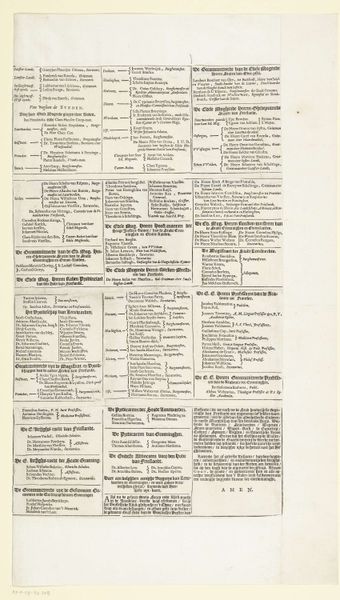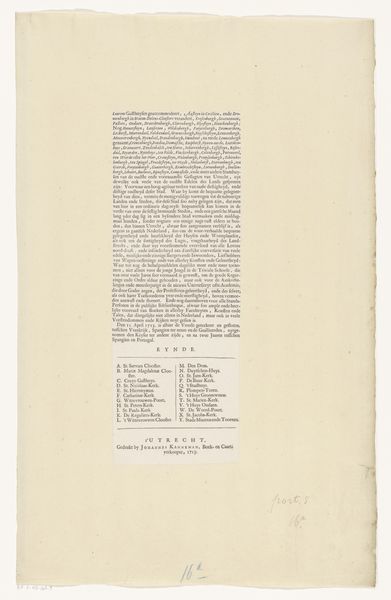
Tekstblad met de namen van officieren van de burgerwacht, behorend bij een plattegrond van Amsterdam after 1730
0:00
0:00
anonymous
Rijksmuseum
print, paper, typography
#
dutch-golden-age
#
ink paper printed
# print
#
paper
#
typography
Dimensions: height 581 mm, width 345 mm
Copyright: Rijks Museum: Open Domain
Curator: Here we have an intriguing print from after 1730 titled "Tekstblad met de namen van officieren van de burgerwacht, behorend bij een plattegrond van Amsterdam"—or, “Text Sheet with the names of officers of the civil guard, belonging to a map of Amsterdam.” Editor: It looks very bureaucratic. Rows and rows of tiny text. I wonder about the labor involved in creating something like this. All that typography… Curator: Exactly! It gives us insight into the civic structure of Amsterdam during the Dutch Golden Age. These officers played crucial roles in maintaining order and defense. Each name represents an individual holding a position of power and responsibility within the community. The print is part of a larger map, so its utility was probably that of a visual and practical index. Editor: Right, because typography in this way—as printmaking, on paper—became crucial to standardization, reproducibility, and the dissemination of information at this moment in the Netherlands. We should consider the workshops where these prints were produced: the apprenticeship, the equipment, the paper itself. Curator: Absolutely. The institutional function of such a list shouldn’t be underestimated either. Look at the way power is visualized—a record of the Amsterdam elite but also the role and status of civic guards. We see this information curated and publicly presented. Editor: So, this seemingly simple piece is, in essence, a snapshot of social hierarchy made accessible via print? You start thinking about who is left off this roster… who benefits from such public inscriptions of authority, and whose labor enables their names to appear on paper in this fashion? Curator: Precisely! And thinking about that—the “whose” and “how”—offers a way to understanding broader themes regarding social dynamics in Dutch society. Editor: Looking closer at this printed list gives a whole new perspective on 18th century life. The mundane made remarkable through this tangible artifact.
Comments
No comments
Be the first to comment and join the conversation on the ultimate creative platform.
